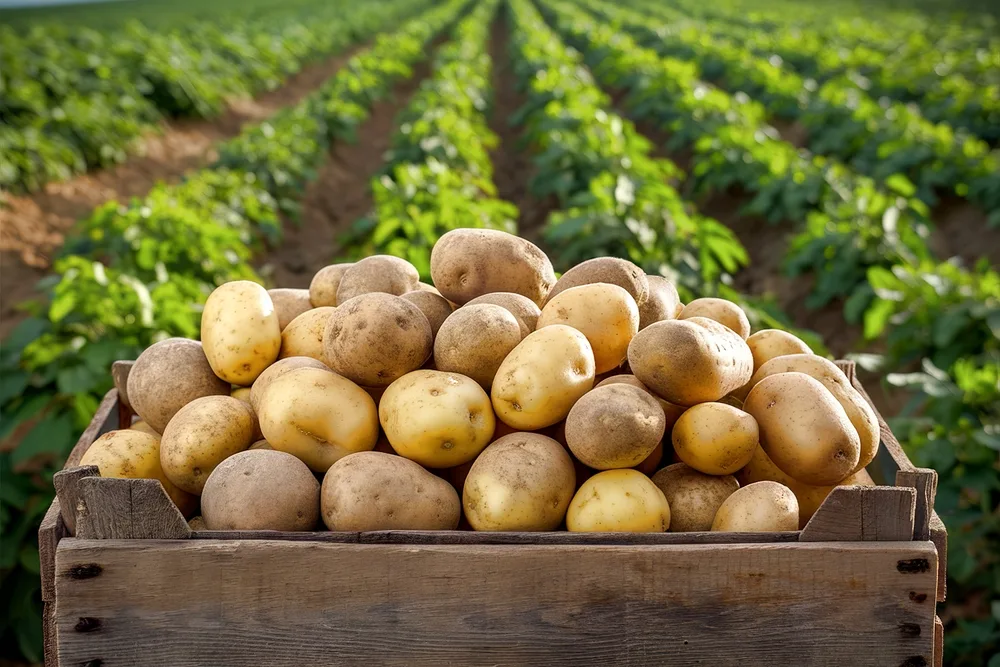Growing potatoes is a fulfilling gardening activity because they are easy to cultivate and yield a generous harvest.
Potatoes need sunlight, weekly watering, and good soil to thrive. However, a common mistake is planting them too closely together.
Potatoes can be planted directly in the garden if the soil is loose and rich. They can also be grown in pots or containers if you prefer a smaller crop.
Ensure the soil drains well and doesn’t hold water. Water your potatoes about an inch per week, but avoid overwatering, as poor drainage can cause root rot. Providing enough water, sunlight, and space is crucial for healthy growth.
Consequences of Planting Potatoes Too Close

Adequate space is essential for potatoes to grow properly and produce a large, healthy crop. Planting them too close can significantly affect their health and yield.
When crowded, potatoes compete for water, nutrients, and light, leading to nutrient deficiencies and reduced growth, resulting in smaller potatoes.
Crowded planting also increases the risk of disease and pests. High moisture and humidity levels in crowded plants can create a perfect environment for fungal diseases like late blight. To prevent this, ensure enough space for good airflow between the plants.
The Ideal Spacing for Potatoes
The ideal spacing depends on the potato variety. Generally, potatoes should be planted 12 to 15 inches apart, 3 feet between rows, and 6 to 8 inches deep. This spacing allows for good air circulation, sunlight, and room for root growth.
Space smaller varieties like Yukon Gold and fingerlings about 8 inches apart. For larger varieties like Russet, space them up to 20 inches apart.
Even in containers, follow similar spacing recommendations. Aim for about a foot of space between each potato, adjusting slightly based on size and variety.
